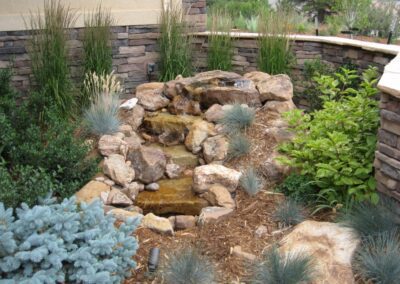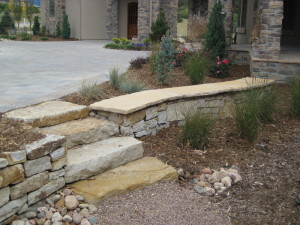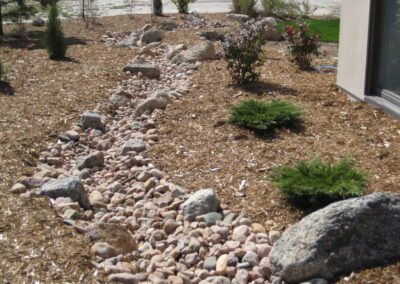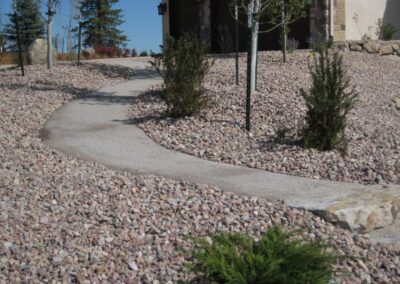
Preparing Your Colorado Springs Landscape for Winter’s Embrace
Preparing Your Colorado Springs Landscape for Winter’s Embrace
Colorado Springs is a beautiful city, but winter can be tough on your landscape. As the golden hues of autumn surrender to the crisp embrace of winter, it’s time to ensure that your landscape is well-prepared to weather the colder months. Winter can be a challenging season for your outdoor space–the cold weather, snow, and wind can damage plants and trees, and make it difficult for them to survive. That’s why it’s important to prepare your landscape for winter before the cold weather arrives. With some thoughtful planning and a bit of elbow grease, you can protect and even enhance your landscape’s health.
1. Mulch Because It Matters
One of the first steps in winterizing your landscape is applying a fresh layer of mulch. Mulch acts as a protective blanket for the soil, helping to regulate soil temperature and moisture levels. You can use a variety of materials for mulch, such as wood chips, bark chips, and straw. Apply a 2-3 inch layer of mulch around your trees, shrubs, and perennial plants. This layer will insulate the soil, keeping it warmer during cold spells and preventing frost heave.
2. Prune for Protection
Late fall is an ideal time for pruning your trees and shrubs. Remove any dead or diseased branches as they are more vulnerable to winter damage. Proper pruning enhances air circulation and reduces the risk of snow or ice accumulation on branches, which can lead to breakage. Also remove any dead leaves and weeds from your yard. This will help to prevent pests and diseases from overwintering in your landscape. You should also trim any shrubs or trees that are overgrown. This will help to prevent them from being damaged by the snow and wind. If you’re uncertain about the best pruning practices for your specific plants, consult with a landscaping professional.
3. Wrap and Shield Plants
Tender plants, particularly newly planted trees and shrubs, may benefit from protective wrapping. Trees and shrubs can be damaged by the weight of snow and ice. To protect them, wrap them with burlap or other protective material. You can also stake trees and shrubs to help them support the weight of snow and ice. Anti-desiccant sprays can also be applied to reduce water loss from leaves. Additionally, use burlap or specially designed plant covers to shield vulnerable plants from harsh winds, heavy snow, and freezing temperatures.
4. Wrap and Clear Water Pipes
Water pipes can freeze and burst in the winter. To prevent this, wrap them with insulation or heat tape. You should also drain any outdoor faucets or hoses. Clogged gutters and downspouts can cause water to back up and damage your roof and foundation. Be sure to clean your gutters and downspouts before the winter weather arrives.
5. Inspect Your Irrigation System
Don’t forget to adjust your irrigation system for the winter season. As temperatures drop, plants require less water. Reduce the frequency and duration of watering sessions, but be sure to deep water your landscape thoroughly before the ground freezes. Proper drainage is crucial to avoid ice buildup that can damage plants and hardscaping elements. Additionally, inspect your irrigation system for any leaks or damage. Repair any leaks and make sure that your irrigation system is turned off before the first frost.
6. Safely Remove Snow
Snow can be both enchanting and challenging for your landscape. Shoveling or snow blowing paths through your garden can help protect plants from the weight of accumulated snow. Brush snow off branches and shrubs gently to prevent breakage. Be cautious, though, as plants can be brittle in cold weather.
If you use de-icing products on walkways or driveways, choose eco-friendly options that won’t harm your plants or contaminate groundwater. Be cautious when shoveling near your landscape features to avoid damaging plants or hardscaping elements.
7. Protect Your Lawn
Integrate hardscaping elements strategically to enhance functionality and aesthetics. Patios, walkways, or retaining walls can define spaces and reduce the need for excessive plantings. Choose materials that complement your overall design while offering durability.
8. Plan for Spring
While winterizing your landscape, take a moment to plan for spring. Consider any landscaping projects you’d like to undertake once the snow melts. Whether it’s adding new plants, creating a patio, or designing a garden space, now is the perfect time to dream and plan for the beauty that spring will bring.
9. Consult a Professional
For complex or extensive landscaping needs, consider consulting a professional landscaping company. They can assess your landscape’s unique requirements and provide expert guidance on winter preparation and long-term care.
Winter in Colorado Springs can be both challenging and beautiful, but by following these tips and being proactive in your landscape care, you canl help ensure that your outdoor space not only survives the winter but thrives when the spring thaw arrives. Prepare your landscape with care, and you’ll be rewarded with a vibrant, healthy, and resilient outdoor haven in the seasons to come.












